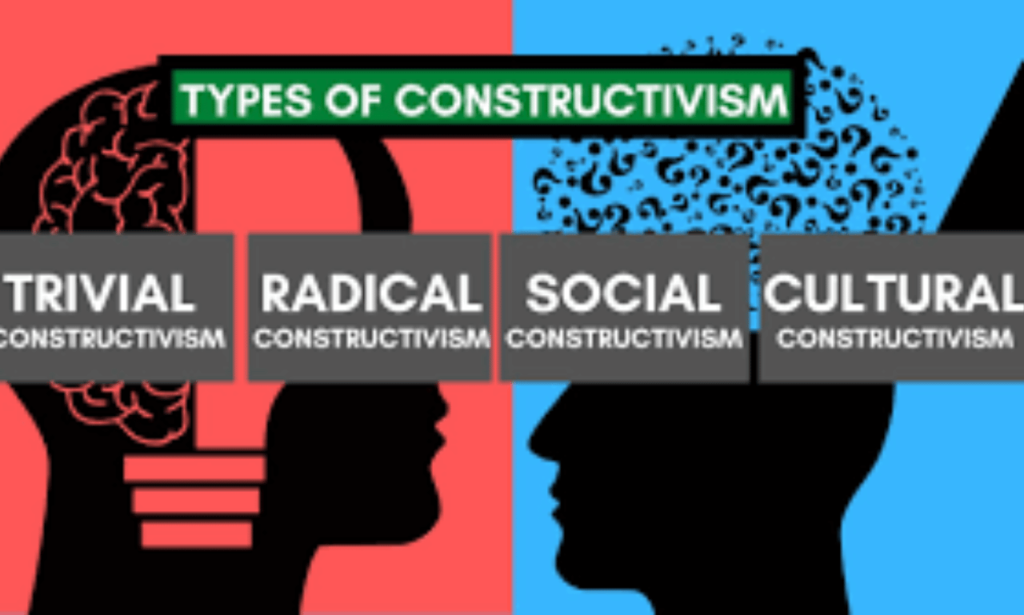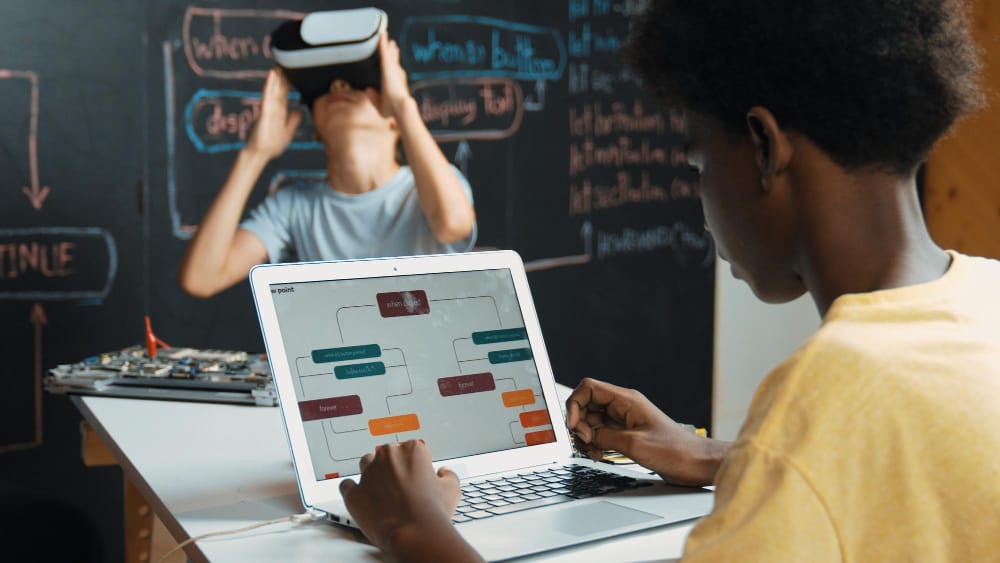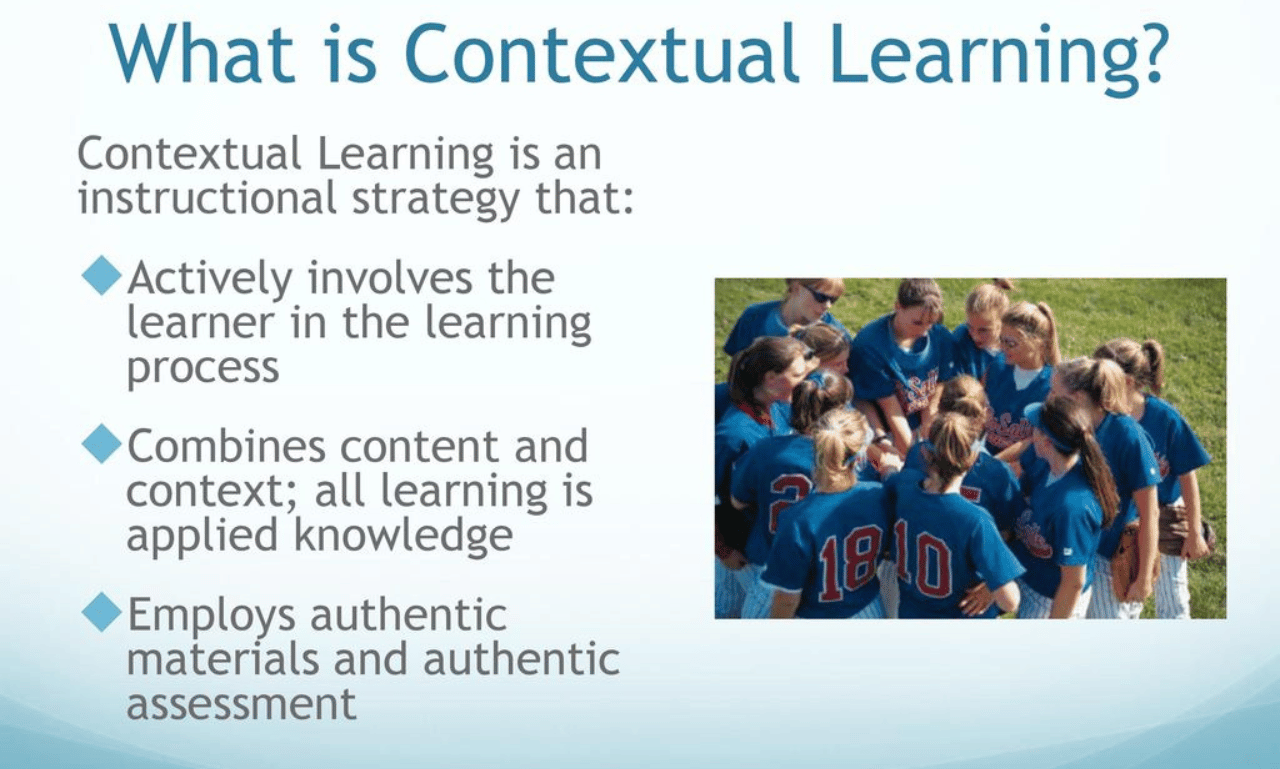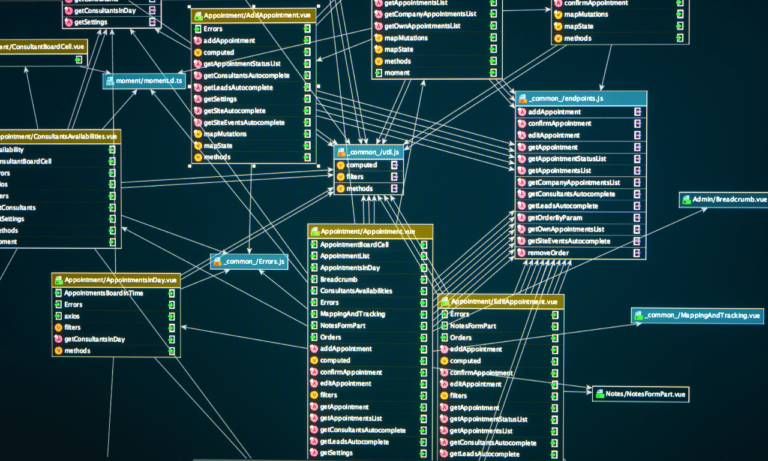Phone:
(+65)8319-0742
The landscape of education continually evolves, requiring an innovative approach to pedagogy that resonates with students and professionals alike. Contextualized Teaching Strategies serve as a guiding force in this transformation, offering not just effective teaching methods but also a personalized approach that considers each learner’s unique circumstances. By integrating real-world scenarios into educational content through contextual learning, these strategies promise to enhance both understanding and application.
At the heart of these methods are adaptive teaching practices and tailored instructional strategies, both of which emphasize the importance of aligning academic instruction with practical, real-life contexts. The ultimate goal is to foster a learning environment that not only imparts knowledge but also equips learners with the ability to navigate and solve problems in their everyday and professional lives.
Key Takeaways
- Real-world relevance is pivotal to successful learning experiences.
- Personalized instruction honors the diversity of learnersâ backgrounds.
- Adaptive teaching practices anticipate and respond to varied learning needs.
- Tailored instructional strategies enhance curriculum engagement and retention.
- Contextualized Teaching Strategies are central to building a competent, real-world problem-solving workforce.
The Importance of Context in Learning and Development
Understanding the dynamics of student-centered learning is essential in crafting effective educational experiences. Context plays a critical role in the cognitive and behavioral development of learners, serving as a lens through which they interpret and engage with content. The effectiveness of active learning approaches is inherently bound to the relevance of the context provided.
Understanding the Role of Context in Behavior
In learning environments that emphasize personalized instruction, there is an emerging recognition of how context influences behavior and information retention. Just as the context can dictate the appropriateness of whispering in different settings, it also determines how students receive and process information. This tailored approach fosters an engaging learning atmosphere, leveraging context as a tool for deeper involvement.
The Impact of Contextualized Learning on Teaching Outcomes
When instructional design incorporates experiential learning, lessons take on a more concrete form, resonating with the real-world experiences of students. This methodology relies heavily on contextual cues and scenarios, paving the way for significant improvements in comprehension and skill application. It is through these student engagement techniques that learners can assimilate new concepts with greater ease, leading to transformative educational outcomes and a workforce ready to tackle emergent challenges.
- Maximizing student interaction with context-rich scenarios
- Implementing role-plays and simulations for practical experience
- Designing assessments that reflect real-life challenges and problem-solving
Ultimately, the combination of a meaningful context with a well-structured, learner-centric educational strategy results in empowered learners capable of navigating complex, ever-changing professional landscapes.
Origins and Theoretical Foundations of Contextualized Teaching Strategies

What is Contextualized Teaching and Learning?
Contextualized Teaching and Learning (CTL) is an instructional approach that engages students in active learning by linking the learning of foundational skills with academic or occupational content. CTL focuses teaching and learning squarely on concrete applications in a specific context that is of interest to the student. This approach recognizes that students learn more effectively in a hands-on, real-world context rather than in an abstract manner. By providing a relevant and meaningful learning experience, CTL helps students make connections between what they are learning and their future careers or personal interests.

Benefits of Contextualized Teaching
The benefits of Contextualized Teaching and Learning are numerous. CTL has been shown to improve student engagement and motivation, as students are more likely to be interested in learning when it is relevant to their lives. CTL also helps students develop critical thinking and problem-solving skills, as they are encouraged to apply what they are learning to real-world scenarios. Additionally, CTL prepares students for career pathways and technical education by providing them with the skills and knowledge they need to succeed in their chosen field. Furthermore, CTL has been shown to be particularly effective in community colleges, where students may need additional support in developing basic skills.
Engrained within these resourceful strategies is the constructionist learning theory. This theory suggests that learners construct knowledge and meaning from their experiences, fostering a dynamic environment wherein students learn best when they are actively involved in constructing artifacts that have personal relevance. Constructionism advocates for student-centered learning that allows discovery and exploration, elements that are integral to customized teaching frameworks.
Alongside constructionist principles, motivation theories play a pivotal role in shaping contextualized teaching strategies. Motivation is a crucial factor in learning, and motivational theories provide insight into what drives learners to engage, persist, and succeed in educational pursuits. Techniques that tie materials to students’ personal goals and interests can increase intrinsic motivation, thereby enhancing the effectiveness of the learning process.
Furthermore, the influence of social learning theories cannot be overlooked when discussing the origin and application of contextualized teaching. Social learning theories posit that people learn from one another through observation, imitation, and modeling. Implementing contextualized teaching strategies that include collaborative projects and peer discussions exemplifies the practical application of social learning principles in the classroom.
- Differentiated instruction: Tailors learning experiences to meet diverse student needs
- Constructionist learning theory: Encourages knowledge building through hands-on creation
- Motivation theories: Addresses the ‘why’ behind students’ willingness to learn
- Social learning theories: Applies the power of group dynamics and observational learning
These foundational theories interlace to create a holistic and effective blueprint for contextualized teaching strategies that are deeply ingrained in pedagogical wisdom. This cohesive framework ensures instruction is not only informative but also transformative, setting a standard for educational excellence that fosters relevance, engagement, and real-world application.
Contextualized Teaching Strategies

Within the evolving landscape of corporate education, harnessing effective teaching methods rooted in sound pedagogical theory empowers educators to curate profoundly impactful learning experiences. By integrating real-world application and problem-centered learning, these strategies align with experiential learning’s best practices. The drive for relevance in instructional design necessitates a shift towards more adaptive teaching practices, which consider the dynamic needs of a diverse workforce and the complexity of current global challenges.
Aligning with Pedagogical Theories
Overarchingly, the tapestry of knowledge-based teaching is woven with the threads of active learning theories. Courses and training modules developed with these considerations in mind facilitate active learning approaches. Such strategic alignment ensures that employees are not merely passive recipients of information but rather, they are actively engaged participants in the educational process.
Applying Real-World Context in Instruction

By anchoring instructions in relatable, real-world contexts, contextualized teaching bridges the gap between theoretical learning and practical execution. These scenarios hone the problem-solving skills essential for modern professions, reflecting an experiential learning paradigm. Employees thus learn not just for a job but for adaptability across various real-world situations, a practice that is increasingly recognized as a potent tactic in workforce development.
Effective Design for Transfer of Knowledge
In the relentless pursuit of educational excellence, the design for transference of knowledge plays a critical role. Curricula are tailored to transcend traditional learning environments, implicating diverse contexts that an employee might encounter. Studies promulgate that when learners associate learned concepts with multiple scenarios, the propensity for knowledge retention and application multiplies, cementing the value of a well-designed instructional strategy grounded in adaptive, problem-centered pedagogy.
| Pedagogical Element | Brief Description | Corporate Implication |
|---|---|---|
| Experiential Learning | Learner engagement through real-life tasks and challenges. | Enhanced problem-solving skills suited to diverse work environments. |
| Active Learning | Interaction and collaboration in learning processes. | Builds teamwork and communication skills necessary for collaborative projects. |
| Adaptive Teaching | Instruction tailored to diverse learner needs and contexts. | Flexible workforce capable of adjusting to changing job requirements. |
| Problem-Centered Learning | Content centered on the resolution of real and relevant issues. | Encourages autonomous and critical thinking directly applicable to job roles. |
Practical Implementation of Contextual Learning in Corporate Training

The evolution of corporate training has moved towards more tailored instructional strategies that cater to diverse learning needs and business goals. Such strategies emphasize the importance of adaptive teaching practices to ensure that employees’ learning experiences are not only personalized but also practical and relevant to their day-to-day work engagements.
An effective approach involves the integration of enterprise-ready learning management systems (LMS), which are pivotal in delivering customizable and contextually-rich educational content. These systems allow for the accommodation of an iterative design process, crucial in fine-tuning training modules for maximum impact. Now, let’s look at how businesses can implement these strategies effectively:
- Identify the core work-related activities and competencies essential to the companyâs goals.
- Design learning modules that encourage group interaction, fostering a collaborative learning culture.
- Employ authentic assessments that truly resonate with and reflect the skills needed in the workplace.
- Iterate and refine training programs based on feedback and performance data from the LMS.
Instructional Design Considerations:
| Aspect | Strategic Approach | Benefits |
|---|---|---|
| Incorporate Real-World Scenarios | Create simulations and case studies relevant to the employees’ roles. | Enhances problem-solving skills and knowledge application. |
| Adaptive Teaching Methodologies | Use LMS data to personalize learning paths for each individual. | Addresses unique learning styles and pace for better retention. |
| Regular Feedback Mechanisms | Integrate tools for continuous assessment and constructive feedback. | Encourages consistent improvement and skill development. |
| Community Building | Promote forums and discussion boards within the LMS. | Builds networking and supports peer-to-peer learning. |

Designing Contextualized Teaching Strategies
Designing Contextualized Teaching Strategies requires careful consideration of the learning objectives and the needs of the students. Teachers should start by identifying the key concepts and skills that students need to learn, and then design activities that teach those concepts and skills in a real-world context. This may involve using authentic assessment, such as project-based assessments or case studies, to evaluate student learning. Teachers should also consider the diverse life context of their students and design activities that take into account their different backgrounds and experiences. By doing so, teachers can create a learning environment that is inclusive and supportive of all students.
Implementing Contextualized Teaching
Implementing Contextualized Teaching and Learning requires a commitment to changing teaching practices and curriculum design. Teachers need to be trained in CTL strategies and techniques, and they need to be given the autonomy to design their instruction in a way that is consistent with CTL principles. Schools and administrators need to provide support and resources for teachers to implement CTL effectively, including professional development opportunities and funding for resources and materials. Additionally, CTL requires a commitment to ongoing evaluation and assessment, to ensure that it is effective in achieving its goals.
Overcoming Challenges
While Contextualized Teaching and Learning offers many benefits, it also presents some challenges. One of the main challenges is the need for significant changes to teaching practices and curriculum design. This can be time-consuming and resource-intensive, and it may require significant professional development for teachers. Additionally, CTL may require significant changes to school culture and policies, which can be difficult to implement. However, with careful planning and support, these challenges can be overcome, and CTL can be a powerful tool for improving student learning and achievement.
To conclude, the strategic implementation of tailored instructional strategies, adaptive teaching practices, and robust enterprise-ready learning management systems will set the stage for not only transference of knowledge but also for fostering a culture of continuous learning and adaptability within corporate environments.
Conclusion
Delving into the world of contextualized teaching strategies within corporate environments brings to light the undeniable power of personalized instruction. Tailoring the learning process to meet individual and workplace needs leads to more than just a knowledgeable team; it fosters an agile workforce equipped with the skills and the adaptability to tackle real-world challenges. Corporate trainers who leverage effective teaching methods that resonate with learnersâ experiences ensure rapid and robust learning, effectively closing the gap between theory and practice.
Moreover, differentiated instruction plays a crucial role in accommodating the diverse learning styles present in today’s multifaceted workforces. Student engagement techniques become paramount, transforming passive learning into an active, engrossing experience. This personalized approach guarantees that every employee receives the opportunity to understand and execute their roles, propelling the entire organization forward with a shared competency and confidence.
In summary, the integration of these innovative teaching strategies produces a positive ripple effectâadvanced skill application, dynamic workplace problem-solving, and a culture of continuous improvement. When learning is rooted in context, it is inherently more meaningful and effective, preparing teams to excel and thrive in an ever-changing professional landscape. Thus, embracing these strategies is not just an investment in employee developmentâit’s a commitment to the future success of the entire organization.
FAQ
What are Contextualized Teaching Strategies?
Contextualized Teaching Strategies integrate academic content with real-world situations and experiences, fostering a deeper understanding and improved assimilation of knowledge. These strategies adapt teaching to leverage learnersâ backgrounds and contexts to enhance engagement and make learning more meaningful and applicable.
How does context impact learner behavior?
Context plays a crucial role in determining appropriate behaviors and understanding. In a learning environment, when content is connected to familiar contexts, it becomes easier for learners to relate to and understand the information, impacting behavior positively and facilitating better learning outcomes.
What are the benefits of Contextualized Learning in corporate settings?
In corporate settings, Contextualized Learning provides employees with training that is directly relevant to their roles and workplace challenges. This leads to a more effective learning process that is closely aligned with the demands of their job, resulting in a more adaptable and proficient workforce.
How does Contextualized Teaching relate to pedagogical theories?
Contextualized Teaching Strategies are influenced by and integrate various pedagogical theories, including constructionist learning theory, motivation theories, and social learning theories. These strategies prioritize relevance and the practical application of knowledge, enhancing the learning experience and making it more effective.
Can Contextualized Teaching Strategies be applied to any subject matter?
Yes, these strategies can be adapted to suit any subject matter. By linking theoretical knowledge to practical, real-world scenarios, they can enhance learning across various disciplines and topics, making instruction more relevant and engaging for learners.
Why is it important to consider real-world applicability in teaching?
Real-world applicability ensures that learners can directly apply the knowledge and skills they acquire to situations they will encounter in their everyday lives, particularly in the workplace. This relevance not only enhances engagement but also improves retention and the transfer of knowledge to new challenges.
What strategies can be used to design effective contextualized learning activities?
When designing contextualized learning activities, it’s important to consider real-world implementation, focus on broad work-related activities, and then narrow down to specific skills and knowledge. Additionally, designing for group interaction and using authentic assessments can help ensure that the learning is practical and transferable to the workplace.
How do you implement Contextualized Learning in a diverse workforce?
To implement Contextualized Learning for a diverse workforce, it’s essential to consider the multicultural nuances and varied experience levels within the team. Tailoring instructional strategies to meet the specific needs of different groups within the workforce ensures that everyone can benefit from the training, leading to more effective outcomes.
What does Personalized Instruction mean in the context of Contextualized Teaching?
Personalized Instruction within the framework of Contextualized Teaching means adapting the learning experience to the individual needs, skills, experiences, and interests of each learner. This approach makes learning more relevant and engaging, which can dramatically improve the outcomes and effectiveness of the educational experience.
Is Contextualized Teaching relevant for online and remote learning?
Absolutely, Contextualized Teaching is highly relevant for online and remote learning environments. Through the use of technologies and thoughtfully designed activities that reference real-world contexts, online learning can be as engaging and effective as in-person training, catering to the flexibility and diverse needs of remote learners.

















